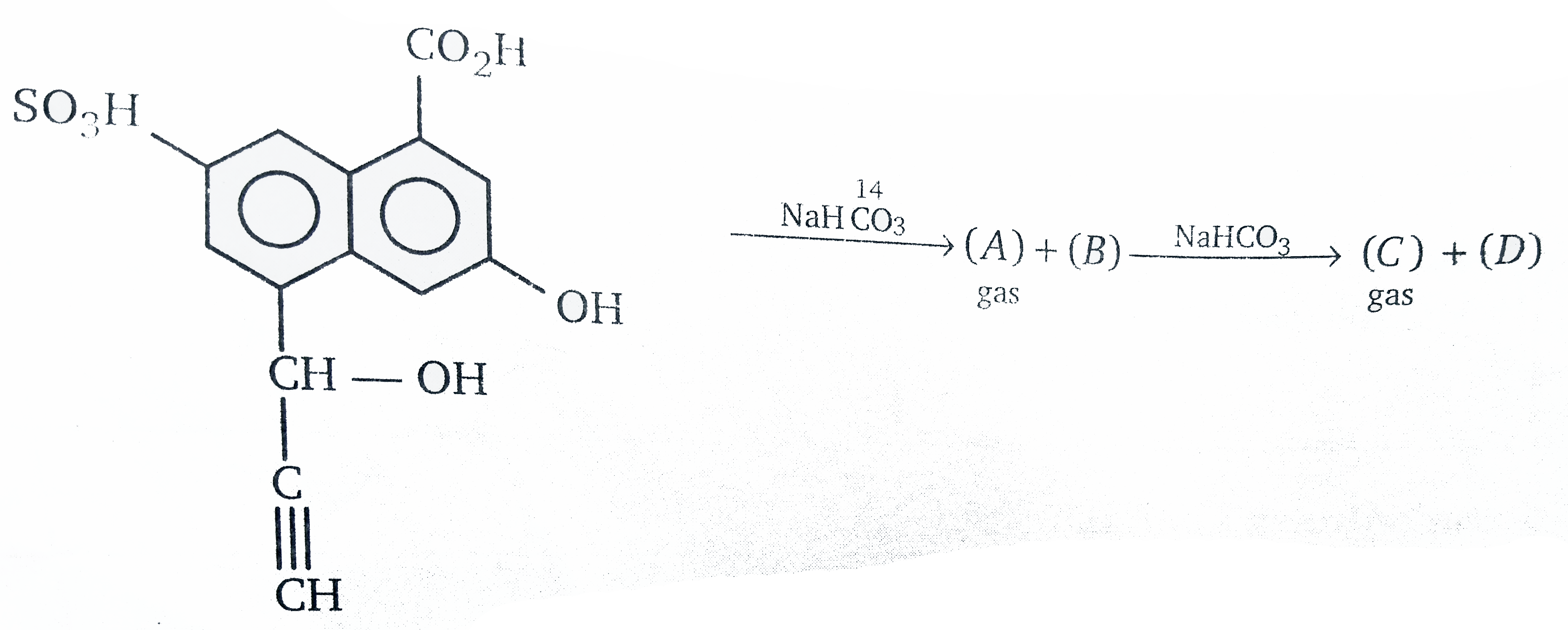Rate of diffusion of gas A is 12 that of gas 'B'. If molecular mass of gas A is 16 than calculate molecular mass of gas 'B'.
To solve the problem, we will use Graham's law of diffusion, which states that the rate of diffusion of a gas is inversely proportional to the square root of its molar mass.
1. Understand the Given Information:
- Rate of diffusion of gas A (R_A) is 12 that of gas B (R_B).
- Molecular mass of gas A (M_A) = 16 g/mol.
- We need to find the molecular mass of gas B (M_B).
2. Apply Graham's Law:
According to Graham's law, we can express the relationship between the rates of diffusion and the molar masses as follows:
RARB=√MBMA
3. Substitute the Known Values:
We know that RA=12RB. Therefore, we can substitute this into the equation:
12RBRB=√MB16
4. Simplify the Equation:
The left side simplifies to 12:
12=√MB16
5. Square Both Sides:
To eliminate the square root, we square both sides of the equation:
(12)2=MB16
This gives:
14=MB16
6. Cross-Multiply to Solve for M_B:
Cross-multiplying gives:
MB=16×14
Therefore:
MB=4 g/mol
Final Answer:
The molecular mass of gas B is 4 g/mol.
---
- Rate of diffusion of gas A (R_A) is 12 that of gas B (R_B).
- Molecular mass of gas A (M_A) = 16 g/mol.
- We need to find the molecular mass of gas B (M_B).
According to Graham's law, we can express the relationship between the rates of diffusion and the molar masses as follows:
RARB=√MBMA
We know that RA=12RB. Therefore, we can substitute this into the equation:
12RBRB=√MB16
The left side simplifies to 12:
12=√MB16
To eliminate the square root, we square both sides of the equation:
(12)2=MB16
This gives:
14=MB16
Cross-multiplying gives:
MB=16×14
Therefore:
MB=4 g/mol
The molecular mass of gas B is 4 g/mol.
Topper's Solved these Questions
- STATES OF MATTERBOOK - AAKASH INSTITUTECHAPTER - STATES OF MATTEREXERCISE - EXERCISE
38 Videos
- STATES OF MATTERBOOK - AAKASH INSTITUTECHAPTER - STATES OF MATTEREXERCISE - TRY YOURSELF
34 Videos
- SOME BASIC CONCEPTS OF CHEMISTRY BOOK - AAKASH INSTITUTECHAPTER - SOME BASIC CONCEPTS OF CHEMISTRY EXERCISE - ASSIGNMENT SECTION J (Aakash Challenges Questions)
10 Videos
- STRUCTURE OF ATOMBOOK - AAKASH INSTITUTECHAPTER - STRUCTURE OF ATOMEXERCISE - ASSIGNMENT (SECTION -D) Assertion-Reason Type Questions
15 Videos
Similar Questions
Knowledge Check
The rate of diffusion of a gas is
Adirectly proportional to its densityBdirectly proportional to its molecular massCdirectly proportional to the square root of its molecular massDinversely proportional to the square root of its molecular mass.The rate of diffusion of a gas is
Adirectly proportional to its densityBdirectly proportional to its molecular massCdirectly proportional to the square root of its molecular massDinversely proportional to the square root of its moleculare mass.The rate of diffusion of a gas is
ADirectly proportional to its densityBDirectly proportional to its molecular weightCDirectly proportional to the square root of its molecular weightDInversely proportional to the square root of its molecular weight

Sum of molecular mass of gas (A+C) is :
View SolutionRate of diffusion of a gas depends on
View SolutionThe density of a gas A is three times that of a gas B. It the molecular mass of A is M, the molecular mass of B is
View SolutionThe density of a gas 'A' is three timess that of a gas 'B' if the molecular mass of A is M, the molecular mass of B is:
View SolutionThe density of a gas A is three times that of a gas B. It the molecular mass of A is M, the molecular mass of B is
View Solution
